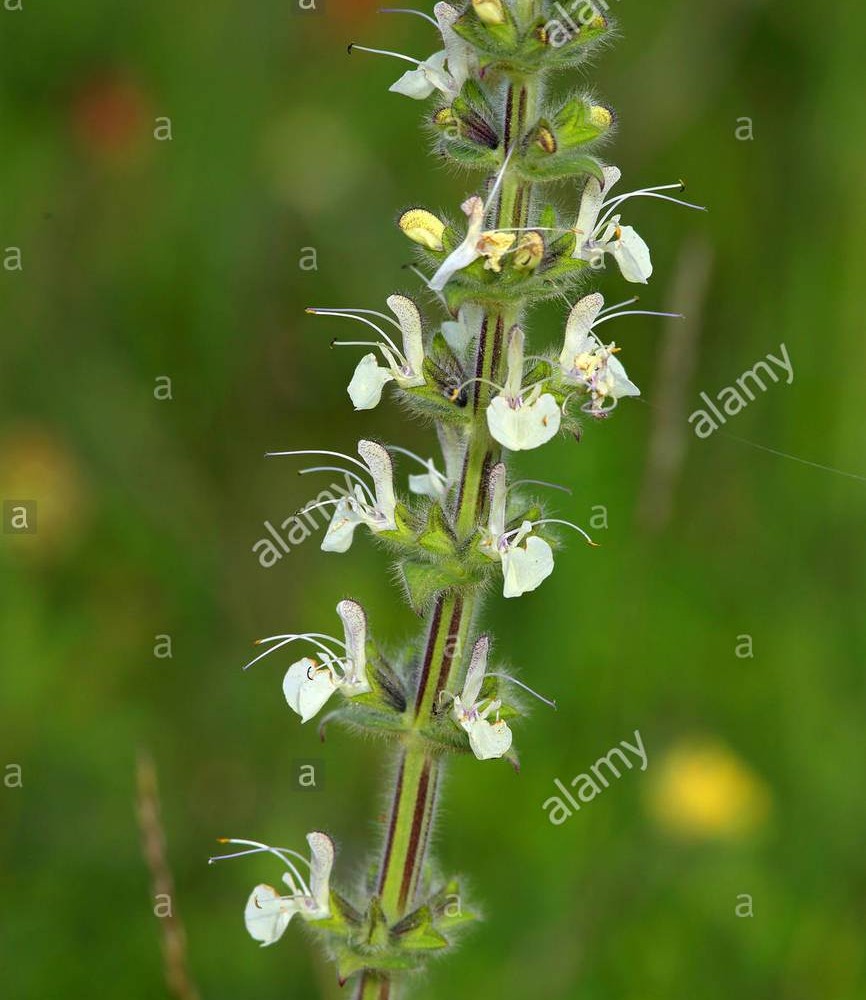Austrian sage
(Salvia austriaca)

Description
Salvia austriaca, or Austrian sage, is a native of high altitudes across Russia and eastern Europe. The plant has a basal rosette of leaves 1 m across, which give off a fetid odor when brushed. The individual leaves are approx. 30 cm long, with indented midrib and veins. The flower stalk grows 60 cm or more above the foliage, with pale yellow flowers in whorls of six or more that make an inflorescence 20–25 cm long. Salvia is the largest genus of plants in the sage family Lamiaceae, with nearly 1000 species of shrubs, herbaceous perennials, and annuals. Within the Lamiaceae, Salvia is part of the tribe Mentheae within the subfamily Nepetoideae. One of several genera commonly referred to as sage, it includes two widely used herbs, Salvia officinalis (common sage, or just "sage") and Salvia rosmarinus (rosemary, formerly Rosmarinus officinalis). The genus is distributed throughout the Old World and the Americas (over 900 total species), with three distinct regions of diversity: Central America and South America (approximately 600 species); Central Asia and the Mediterranean (250 species); Eastern Asia (90 species). Salvia species include annual, biennial, or perennial herbaceous plants, along with woody subshrubs. The stems are typically angled like other members in Lamiaceae. The leaves are typically entire, but sometimes toothed or pinnately divided. The flowering stems bear small bracts, dissimilar to the basal leaves—in some species the bracts are ornamental and showy. George Bentham was first to give a full monographic account of the genus in 1832–1836, and based his classifications on staminal morphology. Bentham's work on classifying the family Labiatae (Labiatarum Genera et Species (1836)) is still the only comprehensive and global organization of the family. While he was clear about the integrity of the overall family, he was less confident about his organization of Salvia, the largest genus in Labiatae (also called Lamiaceae). Based on his own philosophy of classification, he wrote that he "ought to have formed five or six genera" out of Salvia. In the end, he felt that the advantage in placing a relatively uniform grouping in one genus was "more than counterbalanced by the necessity of changing more than two hundred names." At that time there were only 291 known Salvia species.
Taxonomic tree:







